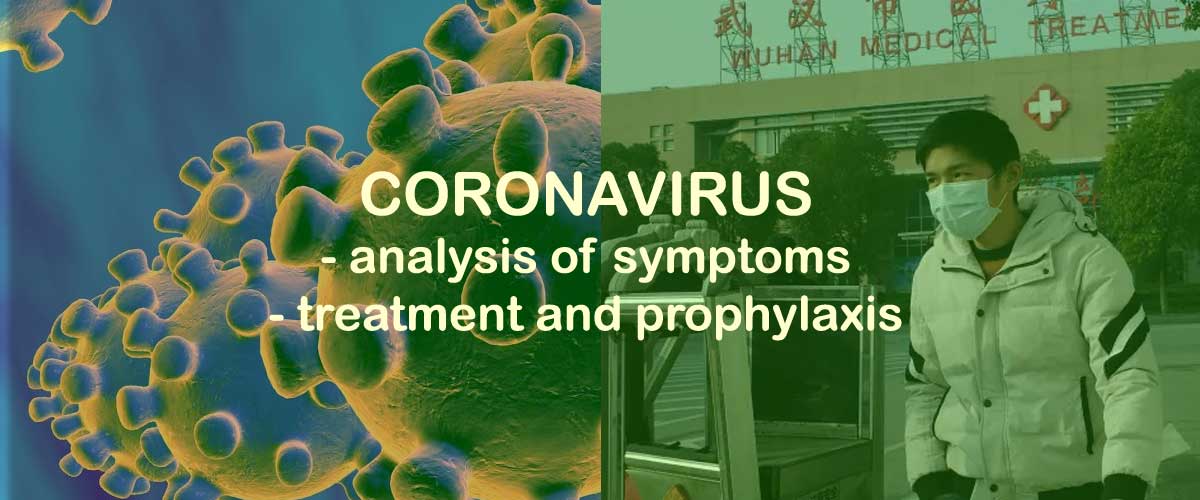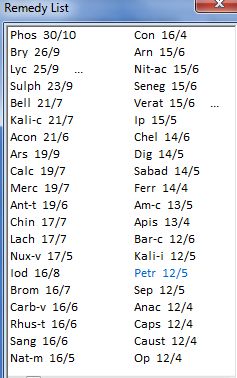About the Author
Dr. Manish Bhatia is a leading homeopathy doctor from India, who has worked extensively on homeopathy treatment of autism. He is practising at Asha Homeopathy Clinic, Jaipur since 2001. He is also author of many internationally best-selling homeopathy books, especially on Organon of Medicine. His online homeopathy courses are also very popular.
Alert: New important information added in this paper (esp., the clinical experience in treating Covid section)! Last update: 3rd September 2020.
The current epidemic (2019-2020) of Coronavirus Covid-19 that started in Wuhan, China, has created a state of panic, which is disproportionate to the mortality rate of this infection. Along with the rising alarm, people in cities where new cases are being discovered, are stocking up on essential medicines, food, masks and sanitizers, creating a shortage in the market for those who really need these products.
People have been promoting alternative cures and prophylaxis too and homeopathy seems to be the most promising and most actively circulated prophylaxis through Facebook, Whatsapp and other social media. The most commonly recommended homeopathic medicines are Arsenicum album, Gelsemium, Influenzinum, Mercurius and Argentum nitricum. The Government of India has officially announced Arsenicum album as a likely prophylactic for Coronavirus infection (I have been told that CCRH did consider symptoms published in The Lancet before recommending Ars-alb).[i]
The problem with most of these recommendations is that they are not based on actual symptoms of the affected patients. Fortunately, now we have a lot of epidemiological, clinical and laboratory data available and published in peer-reviewed journals, which can be used to draw reasonable conclusions about the group of homeopathic medicines that will work in this infection.
This article will provide an in-depth analysis of the recorded symptom-set of patients of Coronavirus infection and then analyze them using the principles of Organon and tools of Repertory and Materia Medica, to reach the desired groups of remedies in a scientific manner.
However, before that we need to establish some facts and dispel some myths to reduce this unusual state of global anxiety.
Myth. Cornonavirus is a fatal infection for everyone.
No. If you look at the mortality rate of recent epidemics and even the usual flu, you will realize that Covid-19 is not a life-threatening infection for most people.
| Infection/Epidemic | Mortality (Death Rate) |
| Ebola | 25-90% |
| Bird Flu – H5N1 | 50% |
| SARS | 9.6% |
| Dengue | 1% |
| Coronavirus Covid-19 | 1-2% |
| H1N1 Influenza (Swine Flu) | .03-.06% |
| Measles | .2% |
| Seasonal Flu | .01% |
In China, the mortality rate is around 2.5% for Covid-19 but as the diagnosis and awareness are improving, so is the management and prognosis. Most people who are succumbing to this infection are over 50 years of age or have some associated comorbidity (illness) like asthma, COPD, diabetes etc. For reasons that we do not understand yet, Covid-19 is usually NOT affecting children below the age of 18 and the children who are getting infected are only developing mild flu-like illness.[ii] So parents of young children can reduce their parental anxiety.
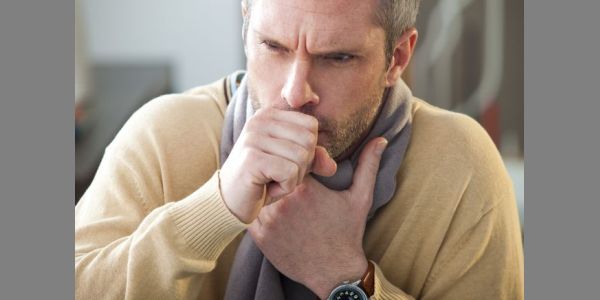
Known Symptoms of Coronavirus Covid-19 Infection.
According to W.H.O.[ii]:
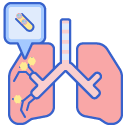 Symptoms of COVID-19 are non-specific and the disease presentation can range from no symptoms (asymptomatic) to severe pneumonia and death.
Symptoms of COVID-19 are non-specific and the disease presentation can range from no symptoms (asymptomatic) to severe pneumonia and death.
Most common symptoms:
- fever.
- dry cough.
- tiredness.
Less common symptoms:
- aches and pains.
- sore throat.
- diarrhoea.
- conjunctivitis.
- headache.
- loss of taste or smell.
- a rash on skin, or discolouration of fingers or toes.
Serious symptoms:
- difficulty breathing or shortness of breath.
- chest pain or pressure.
- loss of speech or movement.
As of 20 February 2020 and based on 55924 laboratory confirmed cases, typical signs and symptoms include: fever (87.9%), dry cough (67.7%), fatigue (38.1%), sputum production (33.4%), shortness of breath (18.6%), sore throat (13.9%), headache (13.6%), myalgia or arthralgia (14.8%), chills (11.4%), nausea or vomiting (5.0%), nasal congestion (4.8%), diarrhea (3.7%), and hemoptysis (0.9%), and conjunctival congestion (0.8%).
The data in August 2020 from many pooled studies show a prevalence of Fever (83.3%), cough (60.3%), and fatigue (38.0%) were the most common, followed by increased sputum production, shortness of breath, and myalgia, with estimated prevalence just under 30% for each, respectively.
Among 16 commonly reported laboratory findings, the most common laboratory abnormalities were elevated C-reactive protein (68.6%) and decreased lymphocyte count (57.4% ), as well as increased lactate dehydrogenase (51.6%). Ground-glass opacities (80.0%) and bilateral pneumonia (73.2%) and were the most frequent chest CT findings.
People with COVID-19 generally develop signs and symptoms, including mild respiratory symptoms and fever, on an average of 5-6 days after infection (mean incubation period 5-6 days, range 1-14 days).
Most people infected with COVID-19 virus have mild disease and recover. Approximately 80% of laboratory confirmed patients have had mild to moderate disease, which includes non-pneumonia and pneumonia cases, 13.8% have severe disease (dyspnea, respiratory frequency 30/minute, blood oxygen saturation 93%, PaO2/FiO2 ratio <300, and/or lung infiltrates >50% of the lung field within 24-48 hours) and 6.1% are critical (respiratory failure, septic shock, and/or multiple organ dysfunction/failure).
One study showed the most common symptoms at onset were fever (59 [73%] patients) and dry cough (48 [59%]). Other non-specific symptoms included dizziness (two [2%] patients), diarrhoea (three [4%]), vomiting (four [5%]), headache (five [6%]), and generalised weakness (seven [9%]).vi
Another study showed that the most common symptoms were fever (98%), cough (77%), and dyspnoea (63·5%). Among 52 critically ill patients, six (11%) did not experience fever until 2–8 days after the onset of symptoms related to SARS-CoV-2 infection. The median duration from onset of symptoms to radiological confirmation of pneumonia was 5 (IQR 3–7) days. The median duration from onset of symptoms to ICU admission was 9·5 (7·0–12·5) days.[iii]
| Fever | 51 (98%) |
| Cough | 40 (77%) |
| Dyspnoea | 33 (63·5%) |
| Myalgia | 6 (11·5%) |
| Malaise | 18 (35%) |
| Rhinorrhoea | 3 (6%) |
| Arthralgia | 1 (2%) |
| Chest pain | 1 (2%) |
| Headache | 3 (6%) |
| Vomiting | 2 (4%) |
Another study showed, patients had clinical manifestations of fever (82 [83%] patients), cough (81 [82%] patients), shortness of breath (31 [31%] patients), muscle ache (11 [11%] patients), confusion (nine [9%] patients), headache (eight [8%] patients), sore throat (five [5%] patients), rhinorrhoea (four [4%] patients), chest pain (two [2%] patients), diarrhoea (two [2%] patients), and nausea and vomiting (one [1%] patient). According to imaging examination, 74 (75%) patients showed bilateral pneumonia, 14 (14%) patients showed multiple mottling and ground-glass opacity, and one (1%) patient had pneumothorax. 17 (17%) patients developed acute respiratory distress syndrome and, among them, 11 (11%) patients worsened in a short period of time and died of multiple organ failure.[iv]
It seems to start with a fever, followed by a dry cough.
After a week, it can lead to shortness of breath, with about 20% of patients requiring hospital treatment.
Notably, the COVID-19 infection rarely seems to cause a runny nose, sneezing, or sore throat (these symptoms have been observed in only about 5% of patients).[v]
Pathological findings from Patients of Coronavirus Covid-19
Most patients have showed bilateral lung involvement, with lesions mainly located peripherally and subpleurally with diffuse distribution.
The predominant pattern of abnormality observed was bilateral (64 [79%] patients), peripheral (44 [54%]), ill-defined (66 [81%]), and ground-glass opacification (53 [65%]), mainly involving the right lower lobes (225 [27%] of 849 affected segments).[vi]
Leukocytosis was detected in 26 (32%) patients and lymphocytosis in 54 (67%) patients. Concentrations of C-reactive protein and serum amyloid A protein were elevated in most patients.[v]
Homeopathy for Coronavirus Covid-19 Infection
 Homeopathy treatment is based on the principle that a drug will prove curative in a condition, if it can produce similar signs and symptoms in a healthy human being during a drug trial.
Homeopathy treatment is based on the principle that a drug will prove curative in a condition, if it can produce similar signs and symptoms in a healthy human being during a drug trial.
In case of epidemics, a general remedy is selected on the basis of the symptoms of the existing patients and that remedy, known as Genus Epidemicus, can be given to the affected population group for that particular epidemic. The Genus epidemicus will change from year to year if the presenting symptoms change. Not just the symptoms, but also the sequence and intensity of specific symptoms can change the indicated homeopathic remedy.
Based on the epidemiological and clinical studies done so far, we know the following symptoms, which our homeopathic remedy should cover:
- Fever
- Chilliness
- Dry Cough
- Pneumonia
- Shortness of breath
- Tightness of chest
The sections below about steps for identifying the Genus epidemicus are technical. Non-medical people can skip the sections below and jump to the section ‘So what homeopathic remedy should I take for Coronavirus?’
Order of symptoms
The ideal remedy should be indicated for dry cough with fever. We have many remedies that cover dry cough, which remains after an acute cold. Such remedies will not be indicated. Other remedies which are known to be effective in allergic dry cough are also unlikely to work.
Absent Symptoms
We see the Nasal Discharge is absent in most patients or is a late and minor symptom. Hence our indicated homeopathic remedy should not have a presenting picture with acute runny colds.
Based on the CT findings
The CT findings suggest that usually the lower lobe of lungs are getting affected; most lesions are peripheral, near pleura and there is a predilection for the right side.
So we need a remedy which is right-sided, symptoms evolve from right to left, is known to affect lower lobes and cause pleuro-pneumonia.
The CT findings have also revealed absence of lung cavitations and hemorrhage in most patients, so remedies known to cover such symptoms are less likely to be indicated.
Converting the Symptoms into Repertorial Rubrics
Some of the possible rubrics from the Complete Repertory:
[Complete ] [Chest]Inflammation:Lungs, pneumonia:Weakness, with:
[Complete ] [Cough]Dry:Fever:During:
[Complete ] [Chest]Constriction:
[Complete ] [Chill, Chilliness]Heat:With:
[Complete ] [Chest]Inflammation:Lungs, pneumonia:Base, lower:
[Complete ] [Chest]Inflammation:Lungs, pneumonia:Pleura-pneumonia:
[Complete ] [Chest]Inflammation:Lungs, pneumonia:Right:
[Complete ] [Generalities]Right:Left, then:
There is a possibility to add slightly different rubrics and more rubrics but the aim of repertorisation is to just reach a probable group of remedies. After that, we have to use our knowledge of materia medica to filter out the right ones.
Another possible criticism could be that most of the symptoms are ‘common’ while homeopathic prescriptions are usually based on the ‘uncommon’ symptoms. To this, I would say that a true simillimum usually covers both the common as well as uncommon symptoms. Many diverse common symptoms and their specific combination is itself unique, which can be used to reach the desired group of remedies.
Repertorisation Results:
Remedy List
We see the most likely homeopathy remedies are Phosphorus, Bryonia alba, Lycopodium, Arsenic alb, Sulphur, Iodium, Belladonna, Kali carb, Mercurius, China, Lachesis, Antim tart, Chelidonium, Gelsemium etc.
Now we need to apply our knowledge of Materia Medica to filter out the remedies that match the sequence and pace of symptoms.
The remedies that have dry cough with fever are our primary candidates. These include:
Aconite, Bryonia, Ipecac, Kali-carb, Phosphorus, Arsenic, Nux vomica, Sabadilla, Lycopodium, Sulphur, Carbo veg, Lachesis, Pulsatilla etc.
In this epidemic, the symptoms are taking time to evolve, so we need to remove remedies that have rapid pace like Aconite, Belladonna, Nux vomica, Arsenic alb etc. We also need to remove remedies that tend to produce runny colds as initial symptoms.
After this filtering, we are left with the following remedies from our reportorial results:
Bryonia, Phosphorus, Lycopodium, Mercurius, Kali carb
that seem to cover the laterality, sequence and pace of symptoms reasonably well.
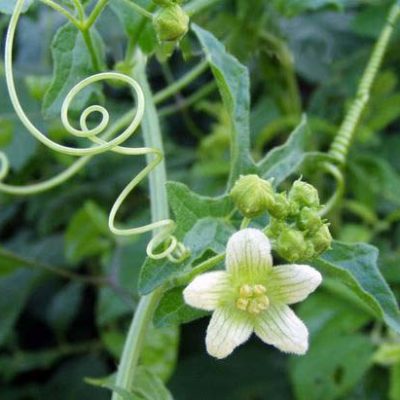 Phosphorus may be ruled out because it is known to be indicated in hemorrhages and pneumonia with cavitations. It is the primary remedy for
Phosphorus may be ruled out because it is known to be indicated in hemorrhages and pneumonia with cavitations. It is the primary remedy for
[Complete ] [Chest]Inflammation:Lungs, pneumonia:Destruction of tissue, cavities, with:[Complete ] [Chest]Inflammation:Lungs, pneumonia:Infiltration of parenchym, with bloody:
It still might be indicated in a few cases, when the symptoms agree.
Out of these, the remedy that covers the initial symptoms better is Bryonia alba and I believe, this remedy will work well as prophylactic too.
The season also now favours Bryonia because it is known to work well when the days are warm and nights are cold, the kind of weather transition after winter we are currently in.
The remedy that covers the later symptoms best is Lycopodium and could be expected to help a large majority of people who develop Pneumonia.
In Iran, there seems to be a picture of sudden collapse and Dr. Sankaran has recommended Camphora 1M for such patients. If the symptoms picture in your country is showing sudden collapse in many patients, you may consider Camphora.
Respiratory Symptoms of Bryonia from Phatak’s Materia Medica
Cough; DRY, HARD, VERY PAINFUL, at night as of from stomach, must sit up worse eating and drinking. Wants to take deep breath, but cannot or it excites cough. Expectoration; rusty blood-streaked or tough. Bronchitis. Asthma. Pneumonia. SHARP STITCHES IN CHEST or at right scapula, worse deep breathing and coughing. Pleurisy. Coming into warm room excites cough. Holds chest, or presses the sternum when coughing.
Keynotes: Motion aggravates + Bursting/Stitching Pains + Dryness of Mucous membranes + Thirsty + Talks of business even while sick + Irritable and cross + Desire to be alone
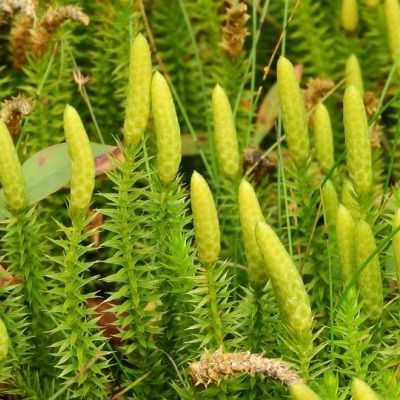 Respiratory Symptoms of Lycopodium from Phatak’s Materia Medica
Respiratory Symptoms of Lycopodium from Phatak’s Materia Medica
Craves air but is chilled by it. Short, rattling breathing worse lying on back. Cough; dry, tickling, teasing; in puny boys with emaciation; day and night; deep hollow; as from sulphur fumes, worse on descending; with emaciation; worse on empty swallowing, stretching the throat; deep breathing. Salty greenish-yellow, lumpy or foul expectoration. Unresolved pneumonia. Brown yellow spots on chest. Abscess of the lungs, tuberculosis. Difficult respiration due to hydrothorax or / and hydropericardium, with flapping of alae nasi. Feeling of tightness in chest with burning.
Lycopodium is also complementary (drug relation) to Bryonia.
Keynotes: Right side + Slow onset + Flatulence + Old people/intellectually keen, physically week + Hurried + Evening aggravation, esp 4-8 PM.
Respiratory Symptoms of Phosphorus
Oppressive breathing; worse least motion. Tight suffocative breathing; worse cough. Larynx; raw, sore, furry; painful on speaking. Voice; low; hoarse worse morning and evening; croupy, then bronchitis. Cough; hard, wheezing; dry, violent, painful, tickling, hacking, exhausting; with retching; causes pain in abdomen; burning in air passages and trembling, worse reading aloud; change of weather; before strangers, laughing, exertion, singing. Sputum; easy, frothy, rusty bluish, salty, sour, sweetish, or cold. Pneumonia; of left lower lung, secondary, with sopor. Chest; full; heavy; pains into throat or right arm; or alternating sides; stitches, in left upper chest; rattling worse cold drinks. Dry hot feeling in chest; with cough; at first dry then loose. Asthma after cough. Repeated haemoptysis. Tuberculosis, in tall; slender, rapidly growing persons. Congestion in lungs. As if skin in larynx.
Keynotes: Inflammation of mucous membranes and nerves + Desires Cold drinks, Salt, Fruits, Chocolate + Hemorrhages + Left side + Suddenness of symptoms + Desires company and consolation + Sensitive to all physical or emotional impressions
Respiratory Symptoms of Kali carbonicum
Catarrhal aphonia; with violent sneezing. Breathing difficult, asthmatic worse least motion or walking; alternating with diarrhoea; with vertigo. Incessant, hard retching or choking, futile cough; then vomiting. Whooping cough. Lungs seem to stick to the ribs. Stabbing chest pains. Hydrothorax. Whole chest very sensitive, during coughing. Cough with relaxed uvula. Coldness of chest. Expectoration; difficult, or small round balls come flying from the mouth without effort; salty, thick, bloody, yellowish, greenish, offensive and profuse; taste sour or pungent.
Keynotes: Prostration + Sharp Stitching pains + Chilly + Irritable + Anxious and Fearful + 2-4 AM aggravates + Combination of sweating, backache & weakness + Tendency to withhold symptoms
Respiratory Symptoms of Mercurius
Hoarse rough voice. Cough; in double bouts; dry at night; yellow green sputum by day. Respiration difficult worse lying on left side but cough worse lying on right side. Stitches from lower right chest to back worse sneezing or coughing. Sensation of bubbles or as of a hot steam in chest. Epistaxis during whooping cough. Cough worse by smoking. Jaundice; in pneumonia. Shortness of breath on going upstairs or walking quickly Asthma better tobacco smoke and cold air.
Keynotes: Profuse mucous discharges + Profuse sweat + Tendency to ulcerate + Hemorrhages + Night aggravates + Lying on right side agg. + Restless + Desire for travel + Thirst for cold drinks
Respiratory Symptoms of Arsenic album
SHORTNESS OF BREATH; unable to lie down, must sit up; worse odours, laughing, ascending, turning in bed, or receding eruptions, better coffee or sweet water. Whistling, wheezing breathing. Asthma, worse taking cold, in mid summer. Cough alternating dry and loose, dry at night better sitting up worse drinking. Expectoration scanty, frothy. Great dyspnoea; in nose; face cyanotic, covered with cold sweat, great anxiety. Aphonia. Emphysema. Pulmonary oedema. Burning or coldness in chest. Cough excited by smoking. Sensation as of vapours of sulphur in larynx. Cough, with bloody sputum. Haemoptysis; burning all over or with pain between scapulae; in drunkards; suppressed menses. Gangrene of the lungs. Darting pain through the upper third of the right lung. Yellowish spots on chest.
Keynotes: Burning pains + Restlessness and Anxious + Acrid thin discharges + Prostration + Putrid discharges + Midday-Midnight Aggravation
For more detail symptoms of all these remedies, refer to Hering’s Guiding Symptoms.
All these remedies are polychrest and other individualizing symptoms must be taken note of before prescribing.
Further reading
Pneumonia from Homeopathic Therapeutics by Liliental, S
Concise Materia Medica by S.R. Phatak
So what homeopathic remedy should I take for Coronavirus?
If you are living in an area which is not yet affected by Coronavirus, you should not be taking any remedy for now.
Based on the analysis above, I believe Bryonia alba 6CH or 30CH, can serve as a prophylactic.
It can be given (only to affected population) once a day, till days become warmer and the epidemic subsides (hopefully). People are mobile in endemic or epidemic areas should take the medicine daily. People who are in self quarantine and not having social contact, can take it for 3-5 days and then take it if and when they venture out. If a patient has flu-like symptoms, you can take the same remedy in 6 or 30 potency, 6 hourly. If the vitality is very low, more freuent repetition may be required. Also, consider Camphora in such a case.
If a patient develops tightness in chest and shortness of breath, Lycopodium 30CH is likely to help.
The remedy suggestions are based on the available data. Homeopathy needs much deeper individualization, and clinical experience of treating Coronavirus Covid-19 patients with homeopathy, may bring up a different group of remedies.
Some recent data from Iran shows that many patients are showing sudden collapse. Dr. Rajan Sakaran as well as Dr. Sunirmal Sarkar have suggested that Camphora be considered as a medicine and prophylactic there. So if Covid-19 patients in your country are showing signs of sudden collapse with respiratory distress, vertigo and cold sweat, you may consider Camphora.
I do not recommend self-medication. You can show this article to your homeopath for a better clinical judgment that he/she will make for you.
Clinical Experience of Treating Covid Patients – March to August 2020
I have been treating many Covid patients myself and have been gathering reports from other homeopaths too.
What I have observed so far is that in the majority of patients, the disease is very mild – begins with some dry or raw feeling in throat, dry cough, fever that lasts 2-3 days, prostration, headache and in many cases diarrhoea. Most of these patients respond well to Bryonia.
Another set of patients has limited cough but a persistent fever that can last up to two weeks. These patients also often have a loss of smell and taste. Such patients often respond well to Pulsatilla.
Only in a few cases, where the anxiety about the disease is extreme and predominating, do we need Arsenic alb.
Some patients who complain of weakness, myalgia, low thirst and drowsiness, respond well to Gelsemium.
Patients showing extreme dyspnoea and low sPo2 may be helped with Tabaccum (better by lying on the abdomen) and Arsenic album.
If you suspect yourself to have Corona virus infection, please consult the concerned medical authorities in your country immediately.
If you have a flu-like illness and wish to take homeopathic treatment, please consult a qualified homeopathy doctor in person.
You can send me your feedback and suggestions regarding this analysis at [email protected]
Postscript
After publishing this article, I have received some feedback from Hong Kong and Macau, where homeopaths have found Bryonia, Gelsemium and Eupatroium perf useful. One case from Spain was successfully treated with Argentum nitricum 9 CH, Rumex crispus 5 CH and Alliun cepa 9 CH. These are the only data that I have received from the Coronavirus affected areas so far.
Postscript 2
I just received a very useful paper from Dana Ullman [vii]. The paper is from Chinese Pharmaceutical Association and is meant for hospital pharmacists. It has lot of first hand data and clinical details of the actual cases from China. The clinical picture/cases in this paper have been divided in four groups. [comments in braces my suggestion]
Group A: Mild – with no respiratory symptoms. [remedies like Gelsemium, Eupatorium and Bryonia seem indicated]
Group B: Moderate – with respiratory symptoms like cough and Fever. One characteristic symptom from this document is that patients have pale or pale-red tongue. Also cough is either dry or has little yellow sputum. There is dry throat too. [remedies like Bryonia, Antim tart, Ars-alb and Phosphorus seem indicated]
Group C: Heavy – with respiratory distress. One characteristic symptom from this document is that patients have red-tongue or yellow-furry at this stage. Patient gasps on movement. [remedies like Lycopodium, Pyrogenium, Lachesis, Bryonia and Arsenic-alb seem indicated]
Group D: Critical – with respiratory failure, cyanosis and collapse. One characteristic symptom from this document is that patients have purple-tongue at this stage. Movement aggravates, there is agitation and sweating with cold limbs [remedies like Merc-sol, Lachesis, Arsenic, Hydrocyanic acid, Camphora, Antim-ars, Carbo-veg may be useful at this stage]
Postscript 3
I have received some information from Iran and it seems that the symptom picture in Iran is a bit different. Many patients are complaining of headache with fever, esp frontal headache. For this scenario Dr Sunirmal Sarkar suggests Polyporus pinicola. Many patients in Iran seem to be succumbing suddenly without many symptoms. I know of two internationally renowned homeopaths who are helping our colleagues in Iran treat Covid-19 cases. Both have independently found Camphora to be the most suitable remedy in Iran. We will hopefully see much more data from our esteemed colleagues soon.
Respiratory Symptoms of Camphora
Hoarse, squeaking voice. Cold breath. Suspended respiration. Violent attacks of dry cough.
Fever: Shaking chill with cold skin; wants covers during the hot stage only. Sudden inflammatory fevers, with rapid alternation of heat and cold; followed by rapid prostration.
Keynotes: Cramps and convulsions + Mental anguish; Feels is about to die + Icy cold, yet averse to covers + Burning pains + Sudden collapse + Cold perspiration + Blueness of mucous membranes
Postscript 4
Jiuan Heng wrote in and shared some useful ideas about dealing with the scare related to the Coronavirus pandemic. In homeopathy treatment, the mental state of the patient is paramount and the following points can be considered for treating the patients as well as people with extreme anxiety and panic regarding this disease:
Fear of contagion — health authorities are giving advice on how to minimize risk by not touching elevator buttons directly with the fingers. In the US, we are told to avoid touching our faces. Is it safe to travel? Is it safe to go to the office? At a restaurant in Singapore, we were sprayed with antibacterial hand sanitizers before we could be seated.
Hoarding — in Singapore, I saw photos of empty supermarket shelves coming from Hong Kong and China. Now, clients tell me they see cars lining up the street to go to the big box stores like Cosco on the weekend, and of supermarket shelves emptying fast. I hear the same thing when I visited Chinatown last weekend, from waitresses who had the time to chat because the tables were empty.
Moreover, the supplies that were most in demand and often out of stock were : face masks, disinfectants, antibacterial wipes, alcohol, thermometer covers, Dettol.
(Mind, Desires, more than she needs: Ars, Bryonia,etc)
Suspicion — is the person who is coughing on the bus a carrier? Are my classmates who just returned from their spring vacation carrying the virus? [They no longer talk about where they went!] There are anecdotal reports of people moving away from anyone who coughs and sneezes.
Racial backlash — I’m not sure how to find this in the repertory. This epidemic has unleashed much of the anger and seething resentment that has been simmering has resulted in public assaults on Chinese/Chinese-looking Asians.
Conspiracy — you must have heard many stories yourself. They develop from a sense of isolation, of being siloed.
Fear of poverty —the knee jerk reaction in East Asia is “How is this going to affect the economy? How is it going to affect my job/business?” The memory of the financial impact of SARS is vivid, and the people who are now in positions of power in business and politics were young adults in/looking for their first jobs when SARS hit Asia 17 years ago. It ripples across the globe, and throughout industries, and we are just seeing the first wave in the U.S.
Based on these mental symptoms and the affinity for the lungs and possibly the stomach, I suggest that Arsenicum Album should be given serious consideration, along with Bryonia as the genus epidemicus.
Postscript 5
Stephen Gallagher has brought to the notice that a very similar flu-like epidemic has happened in 1833, the details of which are given in the book “Homoeopathic practice of medicine” (Jacob Jeanes M.D.):
Another kind of catarrhal fever is the grippe which was prevalent in the beginning of the year 1833, which exhibited far greater differences in its appearances than influenza, and also far more dangerous sequelar diseases ; for, where disease of the chest was present, after an attack of the grippe a phthisis was almost inevitable, and the patient could but seldom calculate on recovery. In most instances its attacks were sudden, but in a few cases it developed itself gradually, and an uncommon debility accompanying the catarrhal symptoms, with a heaviness and soreness of the limbs, particularly of the lower extremities, distinguished the disease, with the greatest certainty, from every other kind. This condition of the limbs was frequently associated with headache and a disposition to vomit, and frequently with sore throat and some hoarseness. The obstruction of the nares was soon very severe and combined with violent tearing pains in the forehead and in the bones of the face, with a sensation of pressure in the rest of the head, vertigo, tearing pains in the ears, &c.
The disease moreover possessed many peculiarities, for example, it awakened, in those who were not perfectly healthy, old, slumbering symptoms of disease, and rendered their cure difficult; it attacked the same subject repeatedly, but always in a new form; it frequently continued for a long time with apparently unimportant symptoms, which might be removed by proper remedies but reappeared after the slightest irregularities of diet, often even on the next day; it also readily complicated itself with other diseases, modified their course, and aggravated the evil.
Frequent smelling of Camphora on the first appearance of the symptoms would suppress the disease, but after a couple of days it still came to complete development. When inflammation of the thoracic viscera was present, Nux v., after previously administered Aconit., always proved useful. Mercurius when repeated every or every other day, was the most adapted to remove the disease or even to destroy it in the germ, especially when, with severe affection of the head, throat and breast, there was a dry, shattering, slowly loosening cough. When the trachea was much irritated or inflamed, so that the acute and violent pain almost prevented speech, and the voice was very much changed, frequent smelling of Phosphorus 30 was of service.
Postscript 6
I have received several inputs from Europe that after some days of dry cough, it leads to a loss of olfactory and gustatory sense for 2 or 3 days. You can consider the following remedies for such cases:
[Complete ] [Smell]Wanting, lost:Taste, with loss of:
Total Drugs :13
3 Pulsatilla Nigricans
2 Kali Bichromicum
1 Amygdalus Persica
1 Antimonium Tartaricums
1 Chloroformum
1 Hyoscyamus Niger
1 Justicia Adhatoda
1 Lemna Minor
1 Magnesia Muriatica
1 Natrum Muriaticum
1 Rhododendron Ferrugineum
1 Sticta Pulmonaria
1 Teucrium Marum Verum
For ‘Loss of smell, with cough‘, Knerr lists only Anacardium
and ‘Smell, wanting, influenza after‘, lists only Mag-mur.
Postscript 7
We seem to be witnessing two forms of this disease. In some parts like Wuhan, Iran and Italy, the disease has been severe with lot of patients complaining of respiratory distress and collapse. In most other parts of the world, the disease seems to be milder. In India, for e.g., a large number of patients seem to be asymptomatic or are developing very mild symptoms.
I have received reports from many parts that homeopaths around the world are finding Bryonia and Arsenic album most commonly indicated, in that order.
Massimo Mangilavori has found China, China mur and Grindelia more indicated in Italy.
In areas where the cases are largely mild, it will not be possible to find a single Genus epidemicus because when the disease is mild, the individual state is usually dominant. We will then have to individualize from a possible group of remedies, which will include –
Bryonia, Gelsemium, Arsenic-alb, China, China-mur, Grindelia, Nux vomica, Eupatorium perf, Natrum mur, Mercurius, Sulphur etc.
If you have more data about the current Pandemic of Coronavirus or/and its homeopathy treatment, please do write to me at [email protected]
Study Organon with Dr. Bhatia
[i] https://pib.gov.in/PressReleasePage.aspx?PRID=1600895
[ii] Report of the WHO-China Joint Mission on Coronavirus Disease 2019 (COVID-19). https://www.who.int/docs/default-source/coronaviruse/who-china-joint-mission-on-covid-19-final-report.pdf
[iii] Yang X, Yu Y, Xu J, Shu H, Xia Ja, Liu H, et al. Clinical course and outcomes of critically ill patients with SARS-CoV-2 pneumonia in Wuhan, China: a single-centered, retrospective, observational study. Lancet Respir Med. 2020.
[iv] Chen N, Zhou M, Dong X, et al. Epidemiological and clinical characteristics of 99 cases of 2019 novel coronavirus pneumonia in Wuhan, China: a descriptive study. Lancet 2020. Epub January 30, 2020.
[v] https://www.worldometers.info/coronavirus/coronavirus-symptoms/
[vi] Shi H, Han X, Jiang N, et al. Radiological findings from 81 patients with COVID-19 pneumonia in Wuhan, China: a descriptive study. The Lancet. Published online February 24, 2020. DOI: https://www.thelancet.com/journals/laninf/article/PIIS1473-3099(20)30086-4/fulltext

